
Mank opens at the Rafael on Friday, November 20. Although it is destined for Netflix (starting on December 4), Mank is well worth catching on the big screen while it is still available in theaters. One reason is its spectacular black-and-white cinematography.
Set around 1940, Mank centers on screenwriter Herman J. Mankiewicz (Gary Oldman) and the writing of Citizen Kane. The narrative also jumps around the 1930s, taking in Mank’s relationships with William Randolph Hearst and Marion Davies, who would inspire the fictional Kane. It also concerns the political temperature of the time and the perspectives of Hollywood studios, as represented by MGM’s Louis B. Mayer and Irving Thalberg.
Director David Fincher and cinematographer Erik Messerschmidt emulated Citizen Kane in Mank’s visual style, including the use of “deep focus” photography, in which both the foreground and background are in focus. “Depth of field” was not a given in photography, especially in the ‘30s and ‘40s, when film was “slower” and required much more light than the film stock today.
Citizen Kane director Orson Welles and cinematographer Gregg Toland used “chiaroscuro” effects contrasting light and dark sections across the image. They also employed “Dutch angles” in several shots tilting the camera on its axis. Released in 1941, Kane proved influential on the “films noir” that would proliferate in that decade.
Back when Kane was made, color was a special facet that adorned relatively few movies. There was The Wizard of Oz and Gone with the Wind, but most movies back then were black and white. Contrast that with today, when color is the standard, and contemporary examples of black and white, such as Roma and Cold War, are very much artistic choices.
As a matter of fact, contemporary use of black and white is generally assumed to detract from a movie’s commercial prospects. That’s why digital cameras record in color, so that some markets can access the color files for television and other platforms. Based on an original screenplay by his father, Mank has been on David Fincher’s agenda for several years, but he wasn’t able to get it financed because he wanted to film it in pure black and white. The filming is still digital, but the film’s monochromatic state is authentic and fixed forever.
Speaking of which, if you haven’t yet seen Citizen Kane, don’t you think it’s about time?
– Richard Peterson, Smith Rafael Film Center Director of Programming
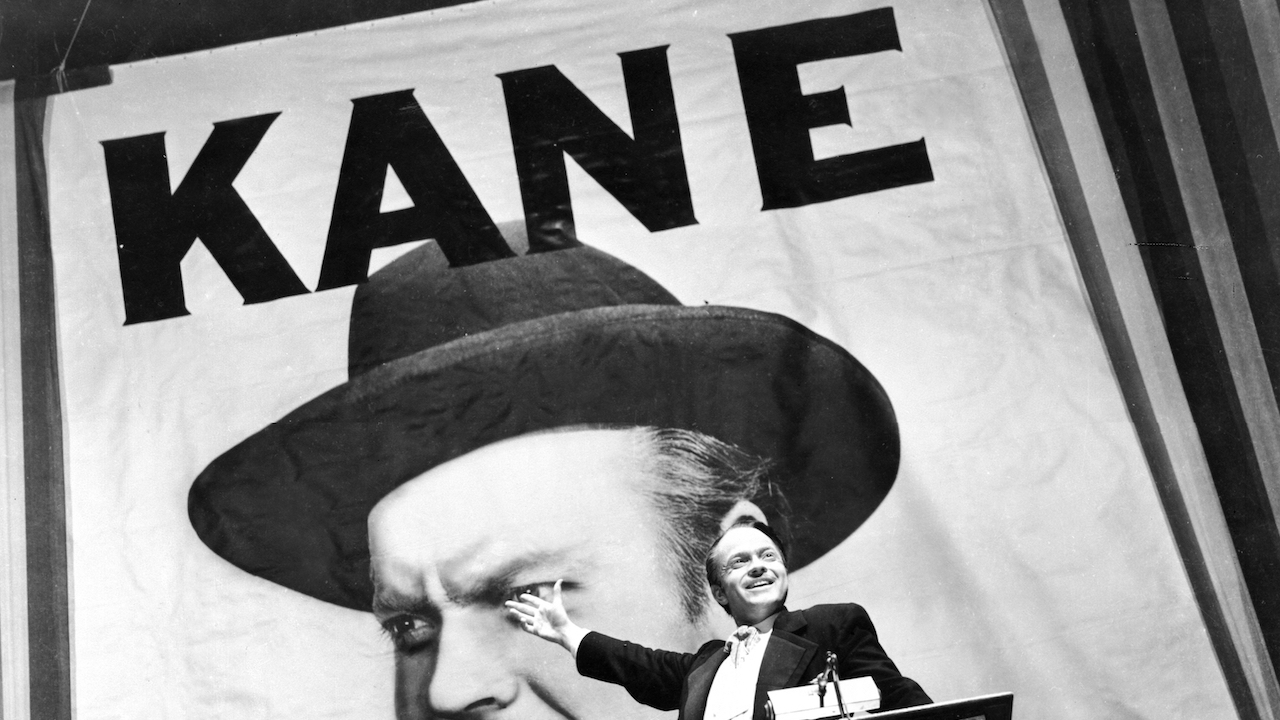
“Dutch angle” shot from Citizen Kane
MORE FROM THE CAFILM BLOG
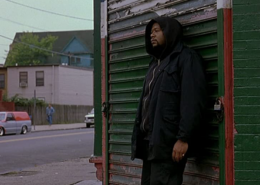 https://www.cafilm.org/wp-content/uploads/2023/02/essay04_post.png
315
560
1_cafilm@org-94901
https://www.cafilm.org/wp-content/uploads/2022/12/cafilm2023_web_home_002.png
1_cafilm@org-949012023-02-26 18:03:532023-02-27 14:39:07Benjamin Mulholland Reflects on Black Creativity in Cinema
https://www.cafilm.org/wp-content/uploads/2023/02/essay04_post.png
315
560
1_cafilm@org-94901
https://www.cafilm.org/wp-content/uploads/2022/12/cafilm2023_web_home_002.png
1_cafilm@org-949012023-02-26 18:03:532023-02-27 14:39:07Benjamin Mulholland Reflects on Black Creativity in Cinema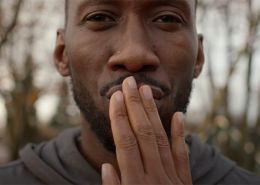 https://www.cafilm.org/wp-content/uploads/2023/02/essay03_post.png
315
560
1_cafilm@org-94901
https://www.cafilm.org/wp-content/uploads/2022/12/cafilm2023_web_home_002.png
1_cafilm@org-949012023-02-23 19:44:552023-02-27 10:24:09Xavier Rernard Cunningham Reflects on Black Creativity in Cinema
https://www.cafilm.org/wp-content/uploads/2023/02/essay03_post.png
315
560
1_cafilm@org-94901
https://www.cafilm.org/wp-content/uploads/2022/12/cafilm2023_web_home_002.png
1_cafilm@org-949012023-02-23 19:44:552023-02-27 10:24:09Xavier Rernard Cunningham Reflects on Black Creativity in Cinema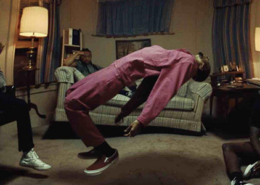 https://www.cafilm.org/wp-content/uploads/2023/02/dontgotellin_still.png
300
600
1_cafilm@org-94901
https://www.cafilm.org/wp-content/uploads/2022/12/cafilm2023_web_home_002.png
1_cafilm@org-949012023-02-16 15:35:192023-02-27 10:35:24PROGRAMMERS’ PICKS: BLACK HISTORY MONTH 2023
https://www.cafilm.org/wp-content/uploads/2023/02/dontgotellin_still.png
300
600
1_cafilm@org-94901
https://www.cafilm.org/wp-content/uploads/2022/12/cafilm2023_web_home_002.png
1_cafilm@org-949012023-02-16 15:35:192023-02-27 10:35:24PROGRAMMERS’ PICKS: BLACK HISTORY MONTH 2023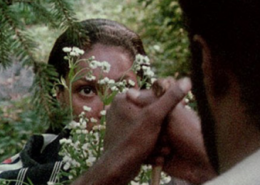 https://www.cafilm.org/wp-content/uploads/2023/02/essay02_post.png
315
560
1_cafilm@org-94901
https://www.cafilm.org/wp-content/uploads/2022/12/cafilm2023_web_home_002.png
1_cafilm@org-949012023-02-15 11:25:422023-02-27 10:33:24Celia Peters Reflects on Black Creativity in Cinema
https://www.cafilm.org/wp-content/uploads/2023/02/essay02_post.png
315
560
1_cafilm@org-94901
https://www.cafilm.org/wp-content/uploads/2022/12/cafilm2023_web_home_002.png
1_cafilm@org-949012023-02-15 11:25:422023-02-27 10:33:24Celia Peters Reflects on Black Creativity in Cinema https://www.cafilm.org/wp-content/uploads/2023/02/osinachi_reflects_post.png
315
560
1_cafilm@org-94901
https://www.cafilm.org/wp-content/uploads/2022/12/cafilm2023_web_home_002.png
1_cafilm@org-949012023-02-07 17:34:122023-02-27 10:23:56Osinachi Ibe Reflects on Black Creativity in Cinema
https://www.cafilm.org/wp-content/uploads/2023/02/osinachi_reflects_post.png
315
560
1_cafilm@org-94901
https://www.cafilm.org/wp-content/uploads/2022/12/cafilm2023_web_home_002.png
1_cafilm@org-949012023-02-07 17:34:122023-02-27 10:23:56Osinachi Ibe Reflects on Black Creativity in Cinema https://www.cafilm.org/wp-content/uploads/2021/04/minari_csend-2.jpg
1080
1920
1_cafilm@org-94901
https://www.cafilm.org/wp-content/uploads/2022/12/cafilm2023_web_home_002.png
1_cafilm@org-949012021-04-12 16:20:572021-04-13 16:48:56ON MINARI
https://www.cafilm.org/wp-content/uploads/2021/04/minari_csend-2.jpg
1080
1920
1_cafilm@org-94901
https://www.cafilm.org/wp-content/uploads/2022/12/cafilm2023_web_home_002.png
1_cafilm@org-949012021-04-12 16:20:572021-04-13 16:48:56ON MINARI https://www.cafilm.org/wp-content/uploads/2021/01/oilycakes_post3.png
315
560
1_cafilm@org-94901
https://www.cafilm.org/wp-content/uploads/2022/12/cafilm2023_web_home_002.png
1_cafilm@org-949012021-01-28 09:51:442021-04-12 16:31:26FOOD AND FILM: FIRST COW AND OILY CAKES
https://www.cafilm.org/wp-content/uploads/2021/01/oilycakes_post3.png
315
560
1_cafilm@org-94901
https://www.cafilm.org/wp-content/uploads/2022/12/cafilm2023_web_home_002.png
1_cafilm@org-949012021-01-28 09:51:442021-04-12 16:31:26FOOD AND FILM: FIRST COW AND OILY CAKES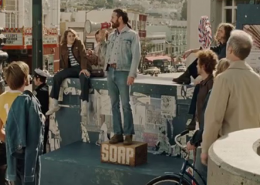 https://www.cafilm.org/wp-content/uploads/2020/11/milk_post-1.png
315
560
1_cafilm@org-94901
https://www.cafilm.org/wp-content/uploads/2022/12/cafilm2023_web_home_002.png
1_cafilm@org-949012020-11-24 11:13:452021-01-11 16:08:06STERLING WALKS: MILK
https://www.cafilm.org/wp-content/uploads/2020/11/milk_post-1.png
315
560
1_cafilm@org-94901
https://www.cafilm.org/wp-content/uploads/2022/12/cafilm2023_web_home_002.png
1_cafilm@org-949012020-11-24 11:13:452021-01-11 16:08:06STERLING WALKS: MILK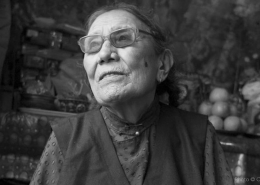 https://www.cafilm.org/wp-content/uploads/2020/11/amaadhe_post.png
630
1120
1_cafilm@org-94901
https://www.cafilm.org/wp-content/uploads/2022/12/cafilm2023_web_home_002.png
1_cafilm@org-949012020-11-24 11:11:552020-11-24 11:13:27THANKSGIVING: MEETINGS WITH REMARKABLE ONES
https://www.cafilm.org/wp-content/uploads/2020/11/amaadhe_post.png
630
1120
1_cafilm@org-94901
https://www.cafilm.org/wp-content/uploads/2022/12/cafilm2023_web_home_002.png
1_cafilm@org-949012020-11-24 11:11:552020-11-24 11:13:27THANKSGIVING: MEETINGS WITH REMARKABLE ONES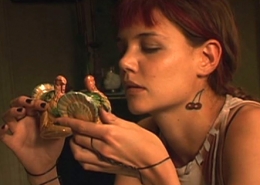 https://www.cafilm.org/wp-content/uploads/2020/11/selects_thanksgiving_post.jpg
315
560
1_cafilm@org-94901
https://www.cafilm.org/wp-content/uploads/2022/12/cafilm2023_web_home_002.png
1_cafilm@org-949012020-11-24 11:11:252020-11-24 11:11:26CFI SELECTS: FILMS TO FEAST ON!
https://www.cafilm.org/wp-content/uploads/2020/11/selects_thanksgiving_post.jpg
315
560
1_cafilm@org-94901
https://www.cafilm.org/wp-content/uploads/2022/12/cafilm2023_web_home_002.png
1_cafilm@org-949012020-11-24 11:11:252020-11-24 11:11:26CFI SELECTS: FILMS TO FEAST ON!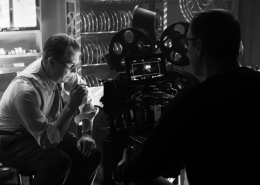 https://www.cafilm.org/wp-content/uploads/2020/11/mank_post.png
315
560
1_cafilm@org-94901
https://www.cafilm.org/wp-content/uploads/2022/12/cafilm2023_web_home_002.png
1_cafilm@org-949012020-11-12 19:19:262020-11-13 07:48:37BLACK AND WHITE FOREVER!
https://www.cafilm.org/wp-content/uploads/2020/11/mank_post.png
315
560
1_cafilm@org-94901
https://www.cafilm.org/wp-content/uploads/2022/12/cafilm2023_web_home_002.png
1_cafilm@org-949012020-11-12 19:19:262020-11-13 07:48:37BLACK AND WHITE FOREVER!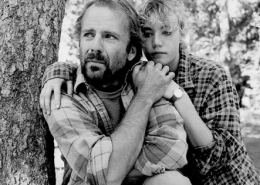 https://www.cafilm.org/wp-content/uploads/2020/11/selects_veterans_post.png
315
560
1_cafilm@org-94901
https://www.cafilm.org/wp-content/uploads/2022/12/cafilm2023_web_home_002.png
1_cafilm@org-949012020-11-12 19:11:212020-11-13 11:22:55CFI SELECTS: VETERANS
https://www.cafilm.org/wp-content/uploads/2020/11/selects_veterans_post.png
315
560
1_cafilm@org-94901
https://www.cafilm.org/wp-content/uploads/2022/12/cafilm2023_web_home_002.png
1_cafilm@org-949012020-11-12 19:11:212020-11-13 11:22:55CFI SELECTS: VETERANS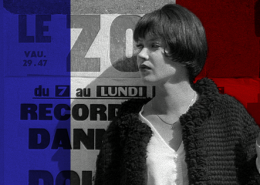 https://www.cafilm.org/wp-content/uploads/2020/11/fremchnewwave_post.png
315
560
1_cafilm@org-94901
https://www.cafilm.org/wp-content/uploads/2022/12/cafilm2023_web_home_002.png
1_cafilm@org-949012020-11-12 12:56:492024-05-11 09:13:16FRENCH NEW WAVE
https://www.cafilm.org/wp-content/uploads/2020/11/fremchnewwave_post.png
315
560
1_cafilm@org-94901
https://www.cafilm.org/wp-content/uploads/2022/12/cafilm2023_web_home_002.png
1_cafilm@org-949012020-11-12 12:56:492024-05-11 09:13:16FRENCH NEW WAVE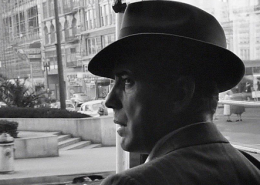 https://www.cafilm.org/wp-content/uploads/2020/11/bogey_post_01.png
315
560
1_cafilm@org-94901
https://www.cafilm.org/wp-content/uploads/2022/12/cafilm2023_web_home_002.png
1_cafilm@org-949012020-11-12 12:55:472020-11-16 13:20:21STERLING WALKS: DARK PASSAGE + MALTESE FALCON
https://www.cafilm.org/wp-content/uploads/2020/11/bogey_post_01.png
315
560
1_cafilm@org-94901
https://www.cafilm.org/wp-content/uploads/2022/12/cafilm2023_web_home_002.png
1_cafilm@org-949012020-11-12 12:55:472020-11-16 13:20:21STERLING WALKS: DARK PASSAGE + MALTESE FALCON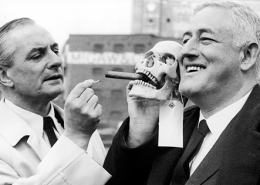 https://www.cafilm.org/wp-content/uploads/2020/10/castle_post2.png
315
560
1_cafilm@org-94901
https://www.cafilm.org/wp-content/uploads/2022/12/cafilm2023_web_home_002.png
1_cafilm@org-949012020-10-29 13:08:082020-10-30 19:37:47WILLIAM CASTLE: MASTER SHOWMAN OF THE MACABRE
https://www.cafilm.org/wp-content/uploads/2020/10/castle_post2.png
315
560
1_cafilm@org-94901
https://www.cafilm.org/wp-content/uploads/2022/12/cafilm2023_web_home_002.png
1_cafilm@org-949012020-10-29 13:08:082020-10-30 19:37:47WILLIAM CASTLE: MASTER SHOWMAN OF THE MACABRE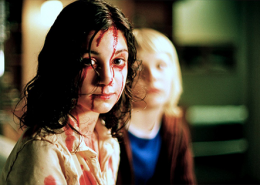 https://www.cafilm.org/wp-content/uploads/2020/10/selects_halloween_post.png
315
560
1_cafilm@org-94901
https://www.cafilm.org/wp-content/uploads/2022/12/cafilm2023_web_home_002.png
1_cafilm@org-949012020-10-29 13:07:462020-10-29 13:07:47HALLOWEEN SELECTS
https://www.cafilm.org/wp-content/uploads/2020/10/selects_halloween_post.png
315
560
1_cafilm@org-94901
https://www.cafilm.org/wp-content/uploads/2022/12/cafilm2023_web_home_002.png
1_cafilm@org-949012020-10-29 13:07:462020-10-29 13:07:47HALLOWEEN SELECTS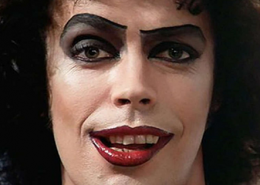 https://www.cafilm.org/wp-content/uploads/2020/10/curry_post_02.png
315
560
1_cafilm@org-94901
https://www.cafilm.org/wp-content/uploads/2022/12/cafilm2023_web_home_002.png
1_cafilm@org-949012020-10-29 13:07:212020-10-29 13:07:21TIM CURRY FEST
https://www.cafilm.org/wp-content/uploads/2020/10/curry_post_02.png
315
560
1_cafilm@org-94901
https://www.cafilm.org/wp-content/uploads/2022/12/cafilm2023_web_home_002.png
1_cafilm@org-949012020-10-29 13:07:212020-10-29 13:07:21TIM CURRY FEST https://www.cafilm.org/wp-content/uploads/2020/10/playingforkeeps_post.png
315
560
1_cafilm@org-94901
https://www.cafilm.org/wp-content/uploads/2022/12/cafilm2023_web_home_002.png
1_cafilm@org-949012020-10-01 23:03:592020-10-13 19:35:12MVFF43 MEMBER SCREENING
https://www.cafilm.org/wp-content/uploads/2020/10/playingforkeeps_post.png
315
560
1_cafilm@org-94901
https://www.cafilm.org/wp-content/uploads/2022/12/cafilm2023_web_home_002.png
1_cafilm@org-949012020-10-01 23:03:592020-10-13 19:35:12MVFF43 MEMBER SCREENING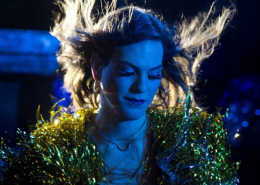 https://www.cafilm.org/wp-content/uploads/2020/09/selects18_post2.png
315
560
1_cafilm@org-94901
https://www.cafilm.org/wp-content/uploads/2022/12/cafilm2023_web_home_002.png
1_cafilm@org-949012020-09-22 10:47:532020-10-25 12:03:12CFI SELECTS VIVA EL CINE
https://www.cafilm.org/wp-content/uploads/2020/09/selects18_post2.png
315
560
1_cafilm@org-94901
https://www.cafilm.org/wp-content/uploads/2022/12/cafilm2023_web_home_002.png
1_cafilm@org-949012020-09-22 10:47:532020-10-25 12:03:12CFI SELECTS VIVA EL CINE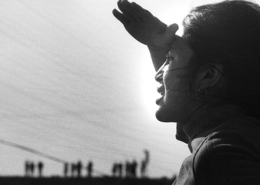 https://www.cafilm.org/wp-content/uploads/2020/09/selects17_post2.png
315
560
1_cafilm@org-94901
https://www.cafilm.org/wp-content/uploads/2022/12/cafilm2023_web_home_002.png
1_cafilm@org-949012020-09-08 16:42:322020-09-08 16:42:33CFI SELECTS: ACTIVE CINEMA
https://www.cafilm.org/wp-content/uploads/2020/09/selects17_post2.png
315
560
1_cafilm@org-94901
https://www.cafilm.org/wp-content/uploads/2022/12/cafilm2023_web_home_002.png
1_cafilm@org-949012020-09-08 16:42:322020-09-08 16:42:33CFI SELECTS: ACTIVE CINEMA https://www.cafilm.org/wp-content/uploads/2020/07/selects_backtoschool_post.jpg
315
560
1_cafilm@org-94901
https://www.cafilm.org/wp-content/uploads/2022/12/cafilm2023_web_home_002.png
1_cafilm@org-949012020-08-27 12:30:112020-08-27 12:30:19CFI SELECTS: BACK TO SCHOOL
https://www.cafilm.org/wp-content/uploads/2020/07/selects_backtoschool_post.jpg
315
560
1_cafilm@org-94901
https://www.cafilm.org/wp-content/uploads/2022/12/cafilm2023_web_home_002.png
1_cafilm@org-949012020-08-27 12:30:112020-08-27 12:30:19CFI SELECTS: BACK TO SCHOOL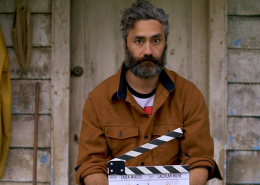 https://www.cafilm.org/wp-content/uploads/2020/08/selects_11_post_taika2.png
315
560
1_cafilm@org-94901
https://www.cafilm.org/wp-content/uploads/2022/12/cafilm2023_web_home_002.png
1_cafilm@org-949012020-08-13 08:36:122020-08-13 08:38:13CFI SELECTS TAIKA-THON
https://www.cafilm.org/wp-content/uploads/2020/08/selects_11_post_taika2.png
315
560
1_cafilm@org-94901
https://www.cafilm.org/wp-content/uploads/2022/12/cafilm2023_web_home_002.png
1_cafilm@org-949012020-08-13 08:36:122020-08-13 08:38:13CFI SELECTS TAIKA-THON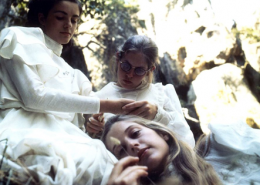 https://www.cafilm.org/wp-content/uploads/2020/08/hangingrock2_post.png
315
560
1_cafilm@org-94901
https://www.cafilm.org/wp-content/uploads/2022/12/cafilm2023_web_home_002.png
1_cafilm@org-949012020-08-13 08:32:432020-08-13 08:35:04PICNIC AT HANGING ROCK
https://www.cafilm.org/wp-content/uploads/2020/08/hangingrock2_post.png
315
560
1_cafilm@org-94901
https://www.cafilm.org/wp-content/uploads/2022/12/cafilm2023_web_home_002.png
1_cafilm@org-949012020-08-13 08:32:432020-08-13 08:35:04PICNIC AT HANGING ROCK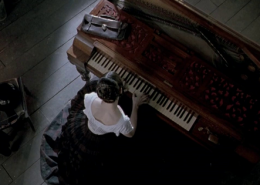 https://www.cafilm.org/wp-content/uploads/2020/08/piano_ladyfingers_post2.png
315
560
1_cafilm@org-94901
https://www.cafilm.org/wp-content/uploads/2022/12/cafilm2023_web_home_002.png
1_cafilm@org-949012020-08-11 15:29:272020-08-13 08:39:02THE PIANO & LADYFINGERS
https://www.cafilm.org/wp-content/uploads/2020/08/piano_ladyfingers_post2.png
315
560
1_cafilm@org-94901
https://www.cafilm.org/wp-content/uploads/2022/12/cafilm2023_web_home_002.png
1_cafilm@org-949012020-08-11 15:29:272020-08-13 08:39:02THE PIANO & LADYFINGERS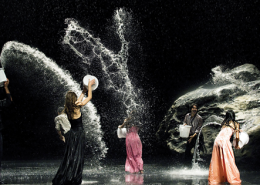 https://www.cafilm.org/wp-content/uploads/2020/05/selects_10_post_pena.png
315
560
1_cafilm@org-94901
https://www.cafilm.org/wp-content/uploads/2022/12/cafilm2023_web_home_002.png
1_cafilm@org-949012020-07-30 13:52:562020-07-30 13:52:57CFI SELECTS: LET’S DANCE
https://www.cafilm.org/wp-content/uploads/2020/05/selects_10_post_pena.png
315
560
1_cafilm@org-94901
https://www.cafilm.org/wp-content/uploads/2022/12/cafilm2023_web_home_002.png
1_cafilm@org-949012020-07-30 13:52:562020-07-30 13:52:57CFI SELECTS: LET’S DANCE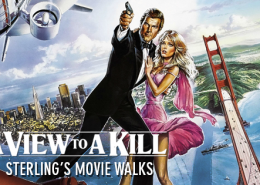 https://www.cafilm.org/wp-content/uploads/2020/07/viewtoakill_walk_post.png
315
560
1_cafilm@org-94901
https://www.cafilm.org/wp-content/uploads/2022/12/cafilm2023_web_home_002.png
1_cafilm@org-949012020-07-30 13:52:392020-07-30 13:52:40A VIEW TO A KILL MOVIE WALK
https://www.cafilm.org/wp-content/uploads/2020/07/viewtoakill_walk_post.png
315
560
1_cafilm@org-94901
https://www.cafilm.org/wp-content/uploads/2022/12/cafilm2023_web_home_002.png
1_cafilm@org-949012020-07-30 13:52:392020-07-30 13:52:40A VIEW TO A KILL MOVIE WALK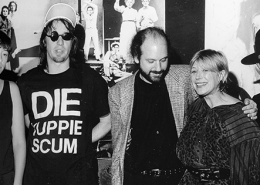 https://www.cafilm.org/wp-content/uploads/2020/07/wilner_post.png
315
560
1_cafilm@org-94901
https://www.cafilm.org/wp-content/uploads/2022/12/cafilm2023_web_home_002.png
1_cafilm@org-949012020-07-30 13:52:182020-07-30 14:33:12REMEMBERING HAL WILLNER
https://www.cafilm.org/wp-content/uploads/2020/07/wilner_post.png
315
560
1_cafilm@org-94901
https://www.cafilm.org/wp-content/uploads/2022/12/cafilm2023_web_home_002.png
1_cafilm@org-949012020-07-30 13:52:182020-07-30 14:33:12REMEMBERING HAL WILLNER https://www.cafilm.org/wp-content/uploads/2020/07/selects15_post2.png
315
560
1_cafilm@org-94901
https://www.cafilm.org/wp-content/uploads/2022/12/cafilm2023_web_home_002.png
1_cafilm@org-949012020-07-16 14:28:072020-07-16 14:28:08CFI SELECTS: A ROOM OF ONE’S OWN
https://www.cafilm.org/wp-content/uploads/2020/07/selects15_post2.png
315
560
1_cafilm@org-94901
https://www.cafilm.org/wp-content/uploads/2022/12/cafilm2023_web_home_002.png
1_cafilm@org-949012020-07-16 14:28:072020-07-16 14:28:08CFI SELECTS: A ROOM OF ONE’S OWN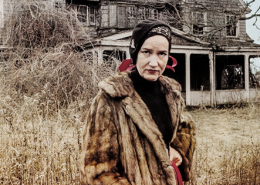 https://www.cafilm.org/wp-content/uploads/2020/07/greygardenscocktailhour_post.png
315
560
1_cafilm@org-94901
https://www.cafilm.org/wp-content/uploads/2022/12/cafilm2023_web_home_002.png
1_cafilm@org-949012020-07-16 10:14:382020-07-17 07:20:31GREY GARDENS SIP COCKTAIL HOUR
https://www.cafilm.org/wp-content/uploads/2020/07/greygardenscocktailhour_post.png
315
560
1_cafilm@org-94901
https://www.cafilm.org/wp-content/uploads/2022/12/cafilm2023_web_home_002.png
1_cafilm@org-949012020-07-16 10:14:382020-07-17 07:20:31GREY GARDENS SIP COCKTAIL HOUR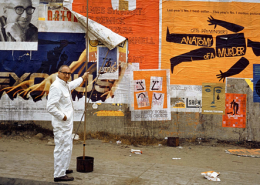 https://www.cafilm.org/wp-content/uploads/2020/06/bass_post.png
315
560
1_cafilm@org-94901
https://www.cafilm.org/wp-content/uploads/2022/12/cafilm2023_web_home_002.png
1_cafilm@org-949012020-07-02 08:16:452024-06-06 20:57:52THE ART OF SAUL BASS
https://www.cafilm.org/wp-content/uploads/2020/06/bass_post.png
315
560
1_cafilm@org-94901
https://www.cafilm.org/wp-content/uploads/2022/12/cafilm2023_web_home_002.png
1_cafilm@org-949012020-07-02 08:16:452024-06-06 20:57:52THE ART OF SAUL BASS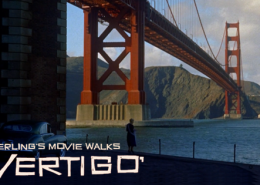 https://www.cafilm.org/wp-content/uploads/2020/06/vertigo_walk_post.png
315
560
1_cafilm@org-94901
https://www.cafilm.org/wp-content/uploads/2022/12/cafilm2023_web_home_002.png
1_cafilm@org-949012020-07-02 08:07:212020-12-06 14:08:05VERTIGO WALK
https://www.cafilm.org/wp-content/uploads/2020/06/vertigo_walk_post.png
315
560
1_cafilm@org-94901
https://www.cafilm.org/wp-content/uploads/2022/12/cafilm2023_web_home_002.png
1_cafilm@org-949012020-07-02 08:07:212020-12-06 14:08:05VERTIGO WALK https://www.cafilm.org/wp-content/uploads/2020/06/selects14_post.png
315
560
1_cafilm@org-94901
https://www.cafilm.org/wp-content/uploads/2022/12/cafilm2023_web_home_002.png
1_cafilm@org-949012020-06-30 17:42:452020-07-13 09:42:55CFI SELECTS: INDEPENDENCE
https://www.cafilm.org/wp-content/uploads/2020/06/selects14_post.png
315
560
1_cafilm@org-94901
https://www.cafilm.org/wp-content/uploads/2022/12/cafilm2023_web_home_002.png
1_cafilm@org-949012020-06-30 17:42:452020-07-13 09:42:55CFI SELECTS: INDEPENDENCE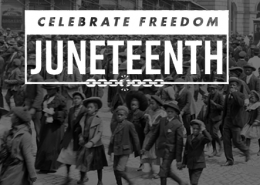 https://www.cafilm.org/wp-content/uploads/2020/06/juneteenth_post.png
315
560
1_cafilm@org-94901
https://www.cafilm.org/wp-content/uploads/2022/12/cafilm2023_web_home_002.png
1_cafilm@org-949012020-06-18 17:43:242020-06-19 06:48:59JUNETEENTH
https://www.cafilm.org/wp-content/uploads/2020/06/juneteenth_post.png
315
560
1_cafilm@org-94901
https://www.cafilm.org/wp-content/uploads/2022/12/cafilm2023_web_home_002.png
1_cafilm@org-949012020-06-18 17:43:242020-06-19 06:48:59JUNETEENTH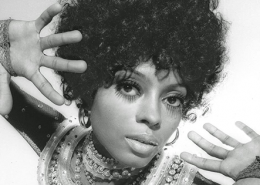 https://www.cafilm.org/wp-content/uploads/2020/06/dianaross_cookies_post.png
315
560
1_cafilm@org-94901
https://www.cafilm.org/wp-content/uploads/2022/12/cafilm2023_web_home_002.png
1_cafilm@org-949012020-06-18 13:14:112020-06-18 17:40:19DIANA ROSS’ FAVORITE COOKIES & MAHOGANY
https://www.cafilm.org/wp-content/uploads/2020/06/dianaross_cookies_post.png
315
560
1_cafilm@org-94901
https://www.cafilm.org/wp-content/uploads/2022/12/cafilm2023_web_home_002.png
1_cafilm@org-949012020-06-18 13:14:112020-06-18 17:40:19DIANA ROSS’ FAVORITE COOKIES & MAHOGANY https://www.cafilm.org/wp-content/uploads/2020/06/selects13_BlackLGBTQ_post.png
315
560
1_cafilm@org-94901
https://www.cafilm.org/wp-content/uploads/2022/12/cafilm2023_web_home_002.png
1_cafilm@org-949012020-06-16 13:59:132020-06-17 19:58:43SELECTS: #BLACKSTORIESMATTER
https://www.cafilm.org/wp-content/uploads/2020/06/selects13_BlackLGBTQ_post.png
315
560
1_cafilm@org-94901
https://www.cafilm.org/wp-content/uploads/2022/12/cafilm2023_web_home_002.png
1_cafilm@org-949012020-06-16 13:59:132020-06-17 19:58:43SELECTS: #BLACKSTORIESMATTER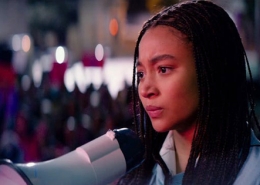 https://www.cafilm.org/wp-content/uploads/2020/06/selects12_post.jpg
315
560
1_cafilm@org-94901
https://www.cafilm.org/wp-content/uploads/2022/12/cafilm2023_web_home_002.png
1_cafilm@org-949012020-06-05 07:33:582020-06-17 19:58:26SELECTS: WHAT IS YOUR SOMETHING?
https://www.cafilm.org/wp-content/uploads/2020/06/selects12_post.jpg
315
560
1_cafilm@org-94901
https://www.cafilm.org/wp-content/uploads/2022/12/cafilm2023_web_home_002.png
1_cafilm@org-949012020-06-05 07:33:582020-06-17 19:58:26SELECTS: WHAT IS YOUR SOMETHING?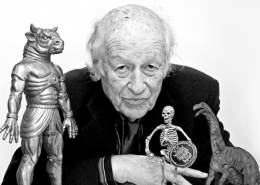 https://www.cafilm.org/wp-content/uploads/2020/05/harryhausen_post-1.png
315
560
1_cafilm@org-94901
https://www.cafilm.org/wp-content/uploads/2022/12/cafilm2023_web_home_002.png
1_cafilm@org-949012020-06-04 15:01:112020-06-17 20:04:44RAY HARRYHAUSEN: MASTER OF CINEMA MAGIC
https://www.cafilm.org/wp-content/uploads/2020/05/harryhausen_post-1.png
315
560
1_cafilm@org-94901
https://www.cafilm.org/wp-content/uploads/2022/12/cafilm2023_web_home_002.png
1_cafilm@org-949012020-06-04 15:01:112020-06-17 20:04:44RAY HARRYHAUSEN: MASTER OF CINEMA MAGIC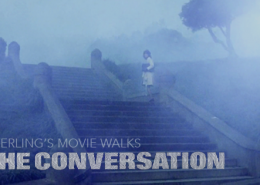 https://www.cafilm.org/wp-content/uploads/2020/05/conversation_post.png
315
560
1_cafilm@org-94901
https://www.cafilm.org/wp-content/uploads/2022/12/cafilm2023_web_home_002.png
1_cafilm@org-949012020-05-28 09:40:292021-06-15 13:18:18CONVERSATION WALK
https://www.cafilm.org/wp-content/uploads/2020/05/conversation_post.png
315
560
1_cafilm@org-94901
https://www.cafilm.org/wp-content/uploads/2022/12/cafilm2023_web_home_002.png
1_cafilm@org-949012020-05-28 09:40:292021-06-15 13:18:18CONVERSATION WALK https://www.cafilm.org/wp-content/uploads/2020/05/bettedavis_post2.png
315
560
1_cafilm@org-94901
https://www.cafilm.org/wp-content/uploads/2022/12/cafilm2023_web_home_002.png
1_cafilm@org-949012020-05-21 15:57:302020-05-22 13:16:21BETTE DAVIS EYES
https://www.cafilm.org/wp-content/uploads/2020/05/bettedavis_post2.png
315
560
1_cafilm@org-94901
https://www.cafilm.org/wp-content/uploads/2022/12/cafilm2023_web_home_002.png
1_cafilm@org-949012020-05-21 15:57:302020-05-22 13:16:21BETTE DAVIS EYES https://www.cafilm.org/wp-content/uploads/2020/05/lynnshelton_post.jpg
315
560
1_cafilm@org-94901
https://www.cafilm.org/wp-content/uploads/2022/12/cafilm2023_web_home_002.png
1_cafilm@org-949012020-05-21 14:26:192020-05-21 18:49:46LYNN SHELTON: INSPIRATIONAL INDEPENDENT
https://www.cafilm.org/wp-content/uploads/2020/05/lynnshelton_post.jpg
315
560
1_cafilm@org-94901
https://www.cafilm.org/wp-content/uploads/2022/12/cafilm2023_web_home_002.png
1_cafilm@org-949012020-05-21 14:26:192020-05-21 18:49:46LYNN SHELTON: INSPIRATIONAL INDEPENDENT https://www.cafilm.org/wp-content/uploads/2020/05/selects_09_post-2.png
315
560
1_cafilm@org-94901
https://www.cafilm.org/wp-content/uploads/2022/12/cafilm2023_web_home_002.png
1_cafilm@org-949012020-05-21 12:30:542020-05-21 12:33:17CFI SELECTS: JOURNEYS
https://www.cafilm.org/wp-content/uploads/2020/05/selects_09_post-2.png
315
560
1_cafilm@org-94901
https://www.cafilm.org/wp-content/uploads/2022/12/cafilm2023_web_home_002.png
1_cafilm@org-949012020-05-21 12:30:542020-05-21 12:33:17CFI SELECTS: JOURNEYS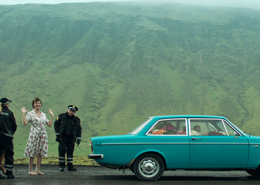 https://www.cafilm.org/wp-content/uploads/2020/05/selects_09_post.png
315
560
1_cafilm@org-94901
https://www.cafilm.org/wp-content/uploads/2022/12/cafilm2023_web_home_002.png
1_cafilm@org-949012020-05-14 11:06:202020-05-21 12:15:53CFI SELECTS: INSPIRATIONAL CHALLENGERS
https://www.cafilm.org/wp-content/uploads/2020/05/selects_09_post.png
315
560
1_cafilm@org-94901
https://www.cafilm.org/wp-content/uploads/2022/12/cafilm2023_web_home_002.png
1_cafilm@org-949012020-05-14 11:06:202020-05-21 12:15:53CFI SELECTS: INSPIRATIONAL CHALLENGERS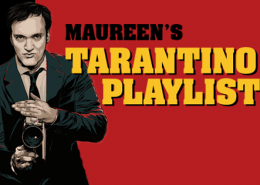 https://www.cafilm.org/wp-content/uploads/2020/05/tarantino_playlist_post2.png
315
560
1_cafilm@org-94901
https://www.cafilm.org/wp-content/uploads/2022/12/cafilm2023_web_home_002.png
1_cafilm@org-949012020-05-13 16:06:532020-05-17 10:51:15TARANTINO PLAYLIST
https://www.cafilm.org/wp-content/uploads/2020/05/tarantino_playlist_post2.png
315
560
1_cafilm@org-94901
https://www.cafilm.org/wp-content/uploads/2022/12/cafilm2023_web_home_002.png
1_cafilm@org-949012020-05-13 16:06:532020-05-17 10:51:15TARANTINO PLAYLIST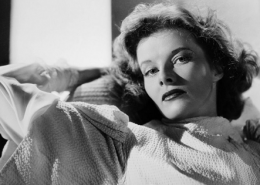 https://www.cafilm.org/wp-content/uploads/2020/04/kate_brownies_post2.png
315
560
1_cafilm@org-94901
https://www.cafilm.org/wp-content/uploads/2022/12/cafilm2023_web_home_002.png
1_cafilm@org-949012020-05-08 13:22:592020-05-21 14:00:56MAKE KATHARINE HEPBURN’S BROWNIES & WATCH STAGE DOOR
https://www.cafilm.org/wp-content/uploads/2020/04/kate_brownies_post2.png
315
560
1_cafilm@org-94901
https://www.cafilm.org/wp-content/uploads/2022/12/cafilm2023_web_home_002.png
1_cafilm@org-949012020-05-08 13:22:592020-05-21 14:00:56MAKE KATHARINE HEPBURN’S BROWNIES & WATCH STAGE DOOR


